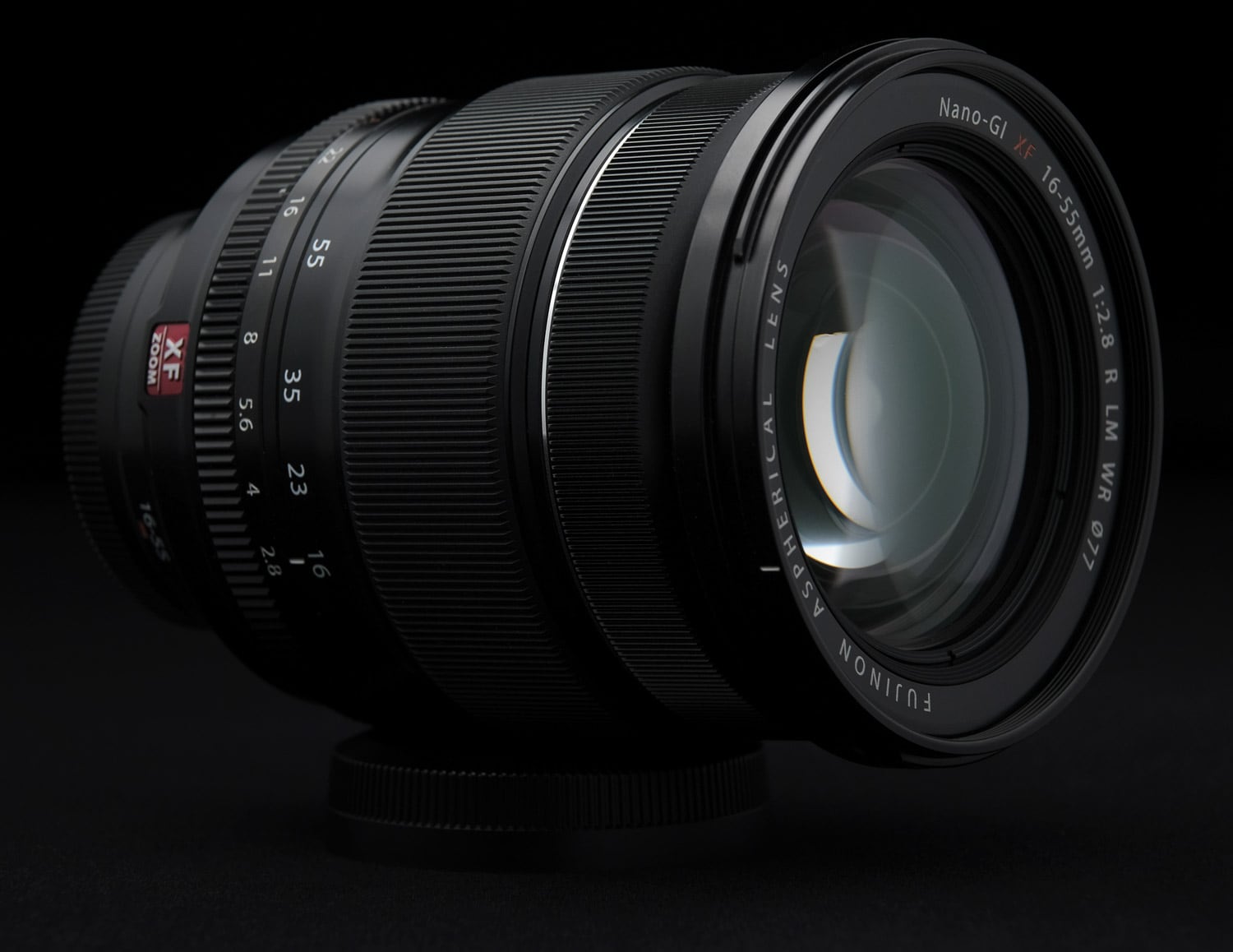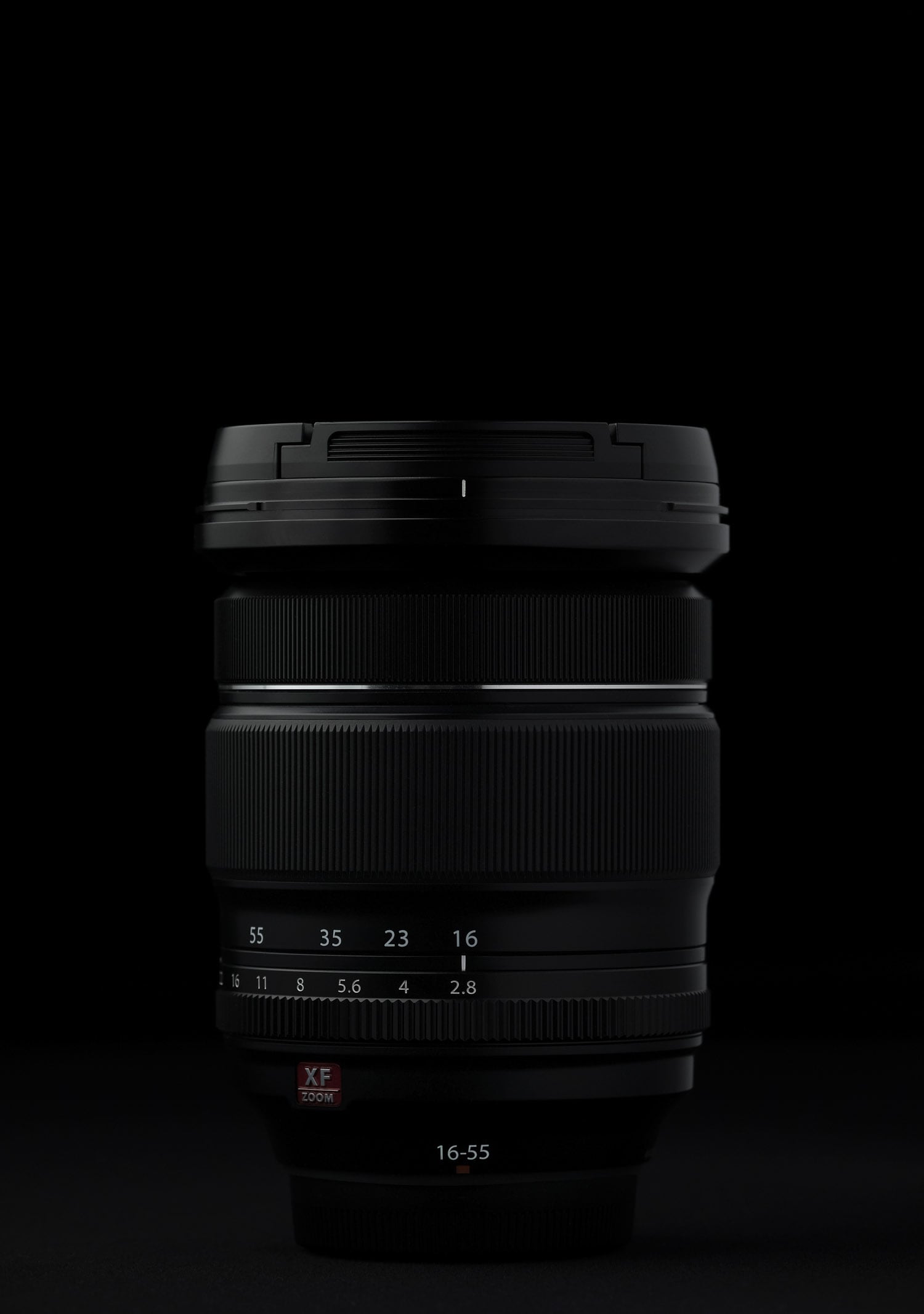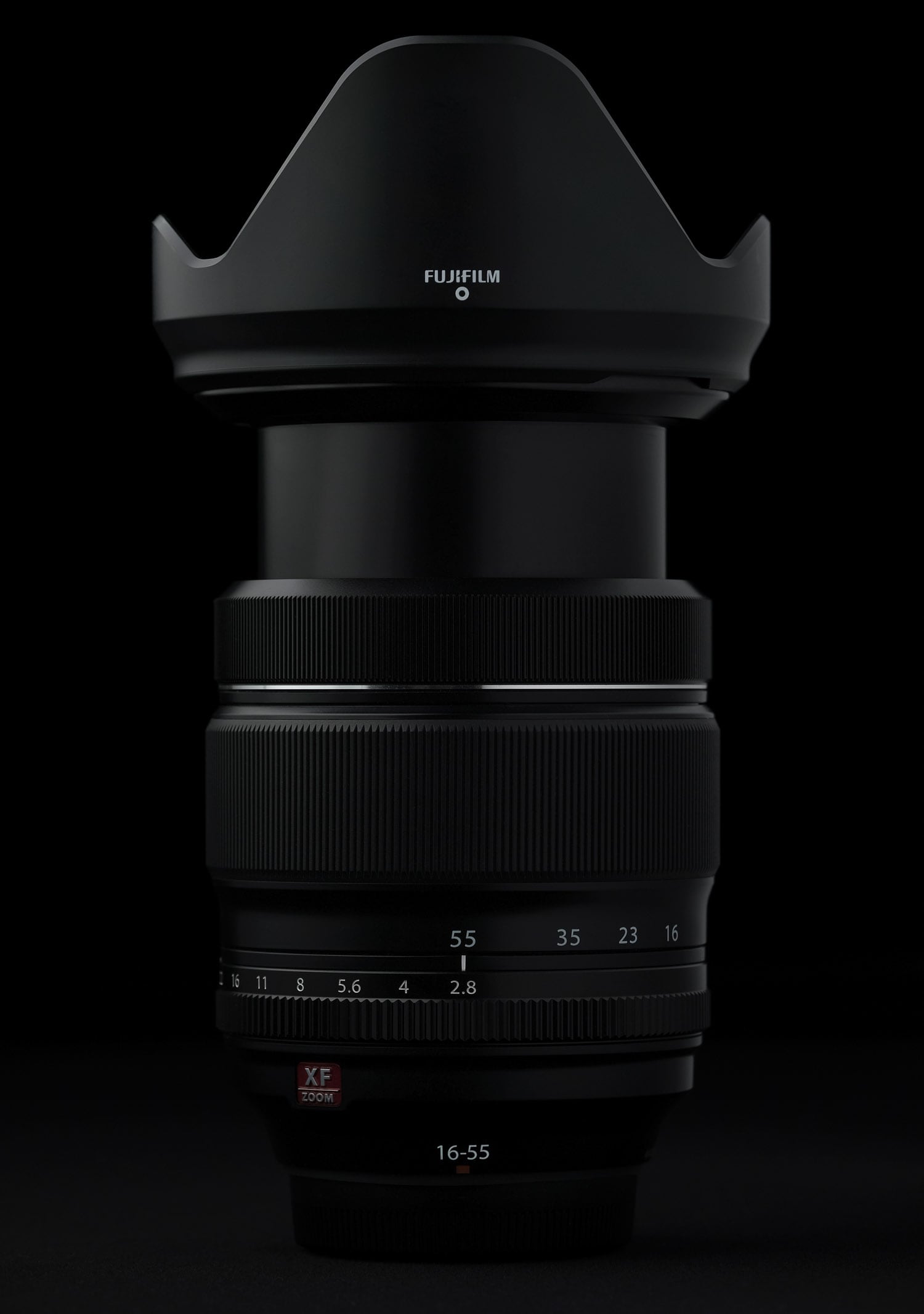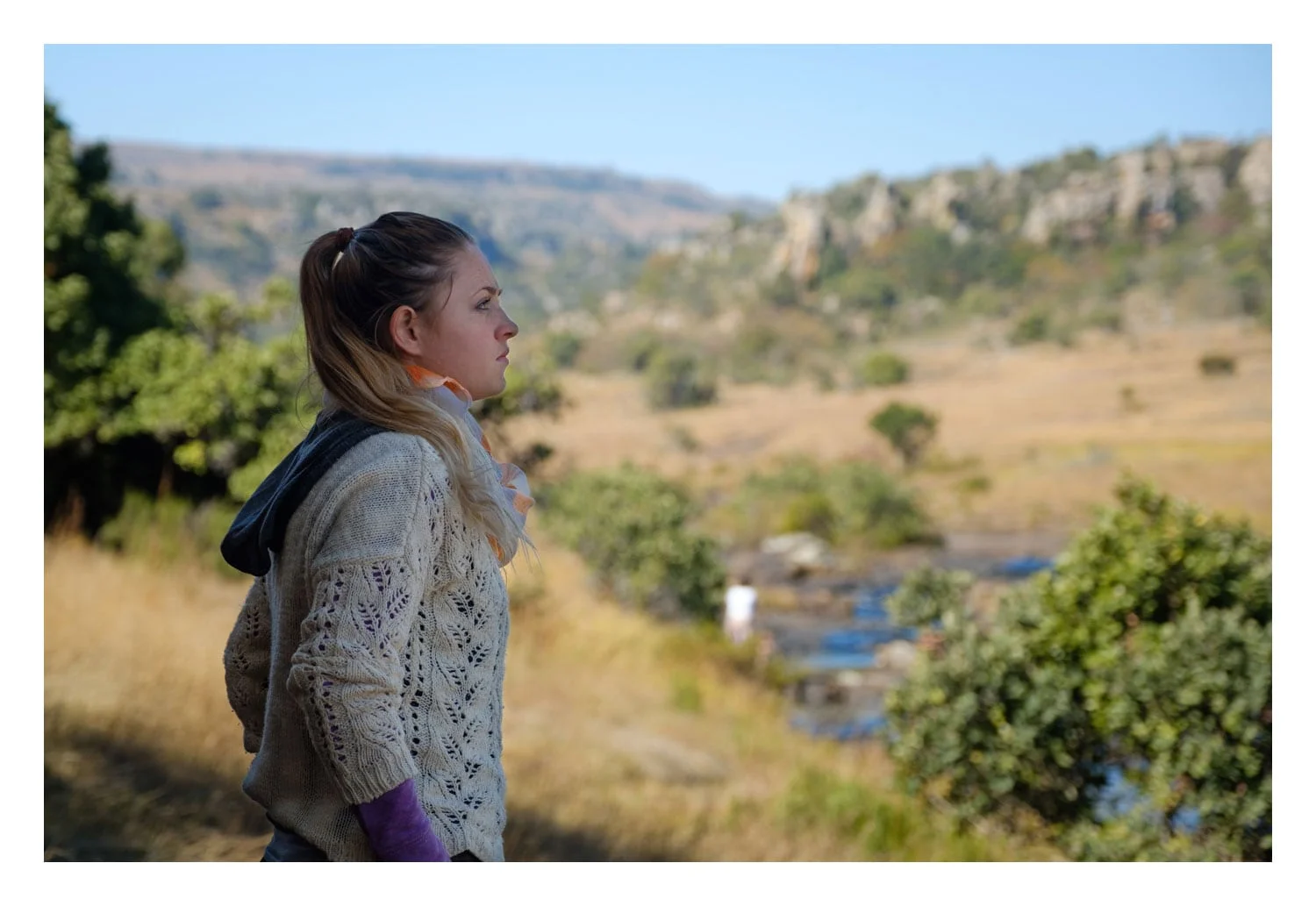Fuji vs. Fuji’s FUJINON XF 16-55mm F2.8 WR Review
April, 2019: Originally published
June, 2020: Minor updates
Introduction
The 24-70mm standard zoom has been a staple in just about every pro photographer’s bag for at least as long as I’ve been interested in photography.1 It’s an extremely versatile focal range that—assuming the optical quality is adequate—can make a few primes unnecessary. Nikon’s 24-70mm f/2.8G is one of the lenses I had with me on the trip when I vowed to go lighter with my camera equipment.
Two years after the switch, I finally had another “pro” standard zoom in my bag. Let’s see how it stands up, and if it was worth the wait.
Specifications | |
| Lens Construction | 17 elements in 12 groups (3 aspherical elements, 3 extra low dispersion) |
|---|---|
| Focal Length (35mm format equivalent) | 16-55mm (24-84mm) |
| Maximum Aperture/Range | f/2.8 – f/22 in ⅓ stop increments |
| Aperture Type | 9 blades (rounded diaphragm opening) |
| Focus Range | Approximately 30cm - ∞ (infinity) |
| Maximum Magnification | 0.16× (telephoto) |
| External Dimensions | 83.3mm diameter × 106mm long |
| Weight | 656g 720g with caps and hood |
| Filter Size | ø77mm |
Features | |
| Weather Sealing | Yes |
| Optical Image Stabilization (OIS) | No |
| Linear Motor | Twin |
| Push/Pull Clutch Manual Focus Ring | No |
| Nano GI Coating | Yes |
| Fluorine Coating | No |
Handling
Build Quality
The build of this lens is excellent, which is to be expected of all XF lenses after the initial run of primes when Fuji were still working out some minor kinks.2 If you’re upgrading from something like the XF 18-55mm F2.8-4 OIS “kit lens,” you really won’t notice much of a difference beyond the rubberized zoom ring (compared to metal). If you already have an XF 10-24mm F4 OIS, you’ll be right at home.
Size and Weight
While this is easily the biggest strike against the lens, it’s still relatively light compared to some full frame variants. Still, the heft of this lens all but demands a camera with adequate grip.
This lens balances perfectly on an X-H1 out of the box. X-T owners may want the added grip of an MHG hand grip, or VG-XT vertical grip, but I would absolutely not call it necessary. The lens gets increasingly awkward, but still usable on an X-Pro and smaller.
Weight in grams
Aperture
The aperture ring is tight and consistent. My copy “sticks” slightly in the f/2.8 (wide open) position. The ring requires enough force that ⅓ stop increments can be tricky on the first try. You may find yourself overshooting and turning back. No biggie, but worth noting.
Another minor handling detail is position of the aperture ring, the width of the lens, and the compact nature of Fuji’s cameras can add up to the photographer not having much room between the fingers of their right hand (wrapped around a grip) and the aperture ring. Quick adjustments to the aperture in a typical two-handed holding style might take a few small turns as a result.
Focusing Speed
The twin linear motor (LM) does its job. Focus is quick, and could spoil you slightly if you move back and forth between the zoom and one of Fuji’s older primes that have a chunk of glass in them. I haven’t had any problems with hunting.
Zoom
The lens telescopes about as much as is typical for standard zooms, making it a relatively small amount given the increased focal range in 35mm equivalence.
Mount
It’s brass, and supposed to be stronger than the standard mount. I’ve personally never bent a lens off its mount.
Hood
Nothing fancy here, a plastic tulip bayonet-syle Fuji hood. I can turn a circular polarizer with relative ease where the hood curves in close to the lens. It adds a lot to the overall diameter of the lens, but not a terrible amount to its length.
Lens Cap
The XF 16-55mm F2.8 WR ships with Fuji’s vastly superior lens cap style (compared to the domed style on older lenses). These are my favourite of all lens caps.
Optical Viewfinder
Forget about it. The OVF can display 100% of the lens’s field of view from 18mm onwards, but even then a good 20-25% of the viewfinder is obstructed by the lens. This lens will never see the mount of my X-Pro body outside of testing for this review.
Image Stabilization
There is none, so the in-body image stabilization of the X-H1 or X-T4+ make them ideal bodies to pair with the XF 16-55mm F2.8 WR. So much so that I would actually increase its rating a little based on a camera with IBIS.
Weather Sealing
So far so good in rainy weather.
Image Quality
A pro lens demands pro image quality and the XF 16-55mm F2.8 WR delivers where I need it to. You can still expect to get better image quality out of most of the primes in this zoom‘s range, but the big tradeoff there of course is carrying more lenses, and having to change them.
Sharpness
In my shooting. I’ve been pleased with the sharpness of this lens at the apertures I want to use it at. This means, f/5.6-11 for landscapes, f/2.8 for portraits. For whatever reason, f/4 sees almost no use from me. Probably because I haven’t been disappointed by the lens at its maximum aperture.
I try not to stop down below f/11, but will do so on occasion when a slower shutter speed is more important than absolute sharpness, or JPEG is my intended output and I can let the Lens Modulation Optimizer do its thing. F/22 is asking for bag of blur.
Bokeh
It’s just ok for me. I see a lot of “nervousness” in the bokeh, and rings in the bokeh balls. For vacation snaps, it’s fine, but if bokeh and background isolation’s your game, I’d grab the XF 50-140mm F2.8 WR over the standard zoom, even at 50-60mm.
Distortion
Uncorrected, there’s gobs of barrel at the wide end, and a decent sized helping of pin cushion zoomed in. Depending on your post processing habits, you may never see this lens’s distortion at it’s worst, but it’s something to be aware of.
Corrected, I haven’t had any trouble stitching panos together convincingly with enough overlap, and without the need for specialty panoramic software like PTGui.
Vignetting
More disappointing news from a “pro” perspective, uncorrected. Vignetting isn’t too difficult to correct for though, and it’s hardly uncommon for the effect to be added to an image, so I won’t dock many points here.
Flare
Remarkably well controlled in my experience thanks in part to the combination of Fuji’s Nano-GI coating, and HT-EBC (High Transmittance Electron Beam Coating). Even shooting directly into the sun, I’ve seen very few stray blobs of light, and contrast is very well maintained. If anything, I sometimes wish I could get more flare out of the lens without the hood deployed. Sunstars are decent.
Aberrations
Negligible to non-existent in typical shooting conditions, however high contrast scenes—tree branches in the foreground of a sunset, for instance—can result in some fairly significant fringing.
(Long) Conclusion and Rating
Fujifilm Canada’s product page for this lens claims it is “ideal” for portraits, landscapes, action/wildlife, video, and urban/street. That’s a lot of things for a single lens to be ideal for. There’s little doubt the lens is capable of those categories, even competent, but “ideal” is a funny word to have chosen. It implies it is the lens to be chosen over others. I’d agree it’s the right lens to choose for occasions when you might need to shoot a few of those categories, like travel, but in isolation, one could certainly argue there are lenses “more ideal” than the standard zoom.
One thing that can’t be argued is the XF 16-55mm F2.8 WR’s versatility. It’s really good at lots of things, but maybe just this side of great in some. Let’s take them one by one:
- Portraits: In a pinch, for sure. If I’m packing a bag with the intention of shooting portraits, the standard zoom would stay on the shelf.
- Landscapes: Without question, this lens excels here in my use for the photographer who doesn’t want to bother with swapping lenses (or can’t due to weather). Yes, distortion and vignetting can be a challenge, but as previously noted, neither have thwarted my attempts to make panos of sweeping land and cityscapes.
- Action/Wildlife: You’d likely have the lens racked out to 55mm the whole time, but you won’t be able to blame missed shots on slow focus.
- Video: On a stabilized body, sure. Anything else without a gimbal? If you’re shooting a Jason Bourne fight scene, perfect.
- Urban/Street: You’ll definitely have the right focal range, but you might have a tough time being inconspicuous if that’s important.
I call that 2/5—landscapes for one, Action/Wildlife and Video for 0.5 each—on categories this lens is “ideal” for. Ironically, there are a couple categories Fuji omitted for which I think this lens is ideally suited:
- Weddings/Events/Concerts: Compared to standard zooms from Canon and Nikon, this lens is smaller, lighter, and even has a bit more reach. Again, you’ll want a body with IBIS to complete the feature set.
- Travel: As I’ve more than alluded to, this is the area my XF 16-55mm F2.8 WR will be seeing the most use. But I often still bring a second camera for most of my portraits and urban/street shooting.
After the X-H1 was announced, I was waiting in anticipation to finally put my unstabilized standard zoom to good use. It’s been my primary lens on two trips to the Lake District as of initially posting this review.
Now that the combination finally exists though, we have the XF 16-80mm F/4 WR OIS available to us. I haven’t had a chance to use this new zoom yet, but assuming the optical quality is more like the XF 16-55mm F2.8 WR and less like the XF 18-135mm F3.5-5.6 WR, I could see that lens becoming the “ideal” single travel zoom, and on any body I want thanks to OIS.3
The uncorrected optical faults are glaring, but you have to work pretty hard to see an uncorrected image out of cameras these days.4 That written, there are some primes this zoom can best in certain circumstances. The optical quality of XF 18mm F2 comes to mind. Maybe even the XF 23mm F2 WR. The snail-paced focusing speed of the XF 56mm F1.2 or the positively glacial focusing speed of the XF 60mm F2.4 Macro. But at every notch on the zoom barrel, you could do better, assuming you’re ok to carry more equipment. For me, I can tell myself I’ll switch lenses until I’m blue in the face, but I almost never do.
Recommended for some, particularly owners of IBIS cameras.
If you’d like to purchase the XF16-55mm F2.8 WR, or anything else for that matter please consider using one of the affiliate links below. The price is the same for you, but a small percentage of the purchase price goes to me, which really helps keep this site going. Thank you.

































